
INSTALLER: Leave this manual with the appliance.
CONSUMER: Retain this manual for future reference.
Model AH3024FP
853067B-4805H
Report # F18-149
Please read this manual BEFORE installing and
operating this replace.
CALIFORNIA PROPOSITION 65 WARNING:
This product can expose you to chemicals including carbon monoxide, which
is known to the State of California to cause cancer, birth defects and/or other
reproductive harm. For more information, go to www.P65warnings.ca.gov
Ce produit peut vous exposer à des produits chimiques, y compris le
monoxyde de carbone, qui est connu dans l'État de Californie pour causer
le cancer, des malformations congénitales et / ou d'autres problèmes de
reproduction. Pour plus d'informations, visitez www.P65warnings.ca.gov
109 East 17th Street, Suite 5478 • Cheyenne, WY 82001 •
Phone: (833) 222-3241 • Web: www.acadiahearth.com
- Do not store or use gasoline or other ammable vapors and liquids in the vicinity of this or any other appliance.
- WHAT TO DO IF YOU SMELL GAS
• Do not try to light any appliance.
• Do not touch any electrical switch; do not use any phone in your building.
• Leave the building immediately.
• Immediately call your gas supplier from a neighbor’s phone. Follow the gas supplier’s instructions.
• If you cannot reach your gas supplier, call the re department.
- Installation and service must be performed by a qualied installer, service agency or the gas supplier.
WARNING:
FIRE OR EXPLOSION HAZARD
Failure to follow safety warnings exactly could result in serious injury, death, or property damage.

2
CERTIFICATIONS
This appliance may be installed in an after market permanently located, manufactured home (USA only) or mobile home,
where not prohibited by local codes. It is only for use with the type of gas indicated on the rating plate, and is not convertible
for use with other gassed, unless a certied kit is used.
• After-market: Completion of sale, not for purpose of resale, from the manufacturer.
Laboratory:
PFS-TECO Laboratories
Standards:
• ANSI Z21.88-2017/CSA 2.33-2017, Vented Gas Fireplace Heaters
• CSA 2.17-2017, Gas-Fired Appliances for Use at High Altitudes
• CSA P.4.1-2015, Testing Method for Measuring Annual Fireplace Efciency
This installation must conform with local codes, or in the absence of local codes, with the National Fuel Gas Code, ANSI
Z223.1/NFPA 54, or the Natural Gas and Propane Installation Code, CSA B149.1.
852502B
!
www.ncertied.org
We recommend that our gas
hearth products be installed
and serviced by profes-
sionals who are certied in
the U.S. by the National
Fireplace Institute® (NFI) as
NFI Gas Specialists.

3
TABLE OF CONTENTS
OVERVIEW
Dimensions .....................................................................5
Safety Label ...................................................................6
Requirements For The Commonwealth Of
Massachusetts ...............................................................7
Installation of Carbon Monoxide Detectors .........................7
Approved Carbon Monoxide Detectors ..............................7
Signage ...................................................................................7
Inspection................................................................................7
Exemptions ..............................................................................7
Manufacturer Requirements ..................................................7
Gas Equipment Venting System NOT Provided ...................7
Before You Start ............................................................. 8
Product Features ..........................................................9
Product Specications ...........................................................9
Controls ...................................................................................9
Part Overview ................................................................10
High Elevations .......................................................................10
INSTALLATION
Venting ...........................................................................11
Rear Vent Application ............................................................11
Approved Vent Systems ........................................................13
Venting Requirements ............................................................13
Vent Section Clearances .......................................................13
Use Of Elbows ..........................................................................13
Framing ..........................................................................14
Wall Enclosure Rough Opening ............................................14
Floor Support And Protection ................................................16
Vent Termination Framing ......................................................16
Vertical Terminations ..............................................................16
Horizontal Terminations ..........................................................17
Mounting Bracket Assembly And Installation ......................17
Mantel And Finishing Requirements ............................18
Finishing Recommendations .................................................18
Gas Line Connection .................................................... 19
Gas Conversion (sold separately) ........................................19
Gas Line Installation ...............................................................19
Termination Locations...................................................20
Vertical Vent Cap Termination ..............................................20
Minimum Termination Clearances .......................................21
Top Vent (VERTICAL ONLY) ..........................................22
Restrictor Adjustment .............................................................22
Top Venting....................................................................23
Vertical Terminations ..............................................................23
Combination Venting .............................................................23
Rear Venting .................................................................. 24
Natural Gas Installations ........................................................24
Horizontal Terminations ..........................................................24
Combination Venting .............................................................24
LP Gas Installations .................................................................25
Horizontal Terminations ..........................................................25
Combination Venting .............................................................25
Log and liner Installation ..............................................26
Setup...............................................................................26
Glass Frame Assembly ...........................................................26
Remove Glass Frame Assembly ...........................................26
Install Glass Frame Assembly ................................................27
Safety Barrier INFORMATION ........................................28
Control Board ................................................................28
Electrical Information .................................................... 28
Electrical Specications .........................................................28
Wiring Requirements ..............................................................28
Replacement Parts And Service .................................30
Over Firing Of Burner ..............................................................30
Maintaining Correct Pilot-Flame ...........................................30
How To Access Components ................................................30
Valve Assembly ......................................................................31
HOMEOWNER OPERATION
Installation Checklist .....................................................32
Lighting Checklist ..........................................................32
Operation Information .................................................32
Using Your Remote Control ....................................................32
Synchronizing The Remote Control .......................................32
Remote Control Functions .....................................................33
Icon Details .............................................................................34
Automatic Safety Restart ......................................................34
Turn On Function .....................................................................34
Turn Off Function .....................................................................34

4
TABLE OF CONTENTS
Understanding Your Remote-Control Icons .........................34
IPI And CPI Modes ..................................................................35
Setting To IPI Or CPI Mode .....................................................35
First-Time Lighting Instructions ......................................35
Safety Information ..................................................................35
Frequently Asked Questions .........................................36
Where Can I Find The Model And Serial Numbers? ............36
Operating Instructions ............................................................36
Turning Off ...............................................................................36
What Happens When First Lit? ...............................................37
Additional Curing Information ...............................................37
Can I Operate During Power Outages? ...............................37
What Is The Required Annual Maintenance? ......................37
How Do I Clean The Glass? ...................................................38
Is My Flame Appearance Correct? .....................................38
What Should I Do If Sooting Occurs? ....................................39
How Do I Change From °C to °F On My Remote? ...............39
How Do I Set The Child-Lock Mode? ....................................39
When Should I Change The Batteries In My Remote? .........39
Why Did My Thermostat Disappear From My Remote? .....39
Why Won’t It Turn On? ...........................................................39
Adjustment ..................................................................... 40
Pressure Testing .......................................................................40
Inlet Pressure Test ....................................................................40
Manifold Pressure Test ............................................................40
Burner Flame Adjustments .....................................................41
Gas Flame Adjustment .........................................................41
Troubleshooting .............................................................42
Burner And Pilot System .........................................................44
Fan ...........................................................................................44
Vent System ............................................................................44
Glass Assembly ......................................................................45

5
OVERVIEW
DIMENSIONS
D
C
G
H
L
M
Electrical
Access
N
B
O
A
F
Gas Line
Access
E
K
J
Physical Dimensions
inches mm
A Height 33 839
B Width 35.5 902
C Depth 15.875 403
D Back Width 19 483
E Back To Gas Line Access 6.5 166
F Bottom To Gas Line Access 2.25 58
G Front To Top Vent Center 8.75 222
H Back To Top Vent Center 6.5 166
J Floor To Rear Vent Center 26 661
K Floor To Top Heat Shield Stand Offs 47 1094
L Back To Electrical Access 8 204
M Bottom To Electrical Access 2 51
N Firebox Opening Width 30.5 774
O Firebox Opening Height 23.5 597

6
When initially lit, condensation will appear on the glass. This is normal and will disappear after several minutes. A
paint smell will occur during the rst few hours of burning. It is recommended to leave the fan off during this period
to help speed the paint curing process. It may produce noises of varying degree as it heats and cools due to
metal expansion and contraction. This is normal, and does not affect the performance or longevity. See “Curing
Instructions” section of this manual.
SAFETY LABEL
OVERVIEW
Hot while in operation. Do not touch. Severe burns may result. Keep children, clothing, furniture,
gasoline, and other liquids having flammable vapors away. Keep burner and control compartment
clean. See installation and operating instructions accompanying appliance.
Do not operate the appliance with glass removed, cracked, or broken. Replacement of the
panel(s) should be done by a licensed or quali
fied service person.
CAUTION:
853069B
ON
OFF
ON/OFF
CAUTION:
FOR YOUR SAFETY READ BEFORE LIGHTING
WARNING: If you do not follow these instructions exactly, a fire or explosion may result causing
property damage, personal injury, or loss of life.
A. This appliance is equipped with an ignition device that automatically lights the
pilot. Do not try to light the pilot by hand.
B. BEFORE OPERATING, smell around the appliance area for gas. Be sure to
smell next t
o the floor because some gas is heavier than air and will settle on
the floor.
WHAT TO DO IF YOU SMELL GAS
•
Do not try to light any appliance.
•
Do not touch any electric switch; do not use any phone in your building.
•
Immediately call your gas supplier from a neighbor's phone. Follow the gas
supplier's instructions.
•
If you cannot reach your gas supplier, call the fire department.
C. Use only your hand to
turn the gas control manual valve. Never use tools. If the
valve will not turn by hand, do not try to repair it; call a qualified service
technician. Force or attempted repair may result in a fire or explosion.
D. Do not use this appliance if any part has been under water. Immediately call a
qualified service technician inspect the appliance and to replace any part of the
control system and any gas cont
rol that has been under water.
OPERATING INSTRUCTIONS
1. STOP! Read the safety information above on this label.
2. Press the wireless remote "OFF" button.
3. Turn off all electric power to the appliance.
4. This appliance is equipped with an ignition device which automatically lights the pilot. Do not try to
light the pilot by hand.
5. Locate the manual valve installed by your qualified service technician. Tu
rn the manual valve
clockwise to the "OFF" position.
6. Wait five (5) minutes to clear out any gas. Then smell for gas, including near the floor. If you smell
gas, STOP! Follow "B" in the safety information above on this label. If you do not smell gas, go to
the next step.
7. Turn the manual valve counterclockwise to the "ON" position.
8. Turn on all electric power to the appliance.
9. Press the
wireless remote ON button.
10. If the appliance will not operate, follow the instructions, "To Turn Off Gas To Appliance" and call
your service technician or gas supplier.
TO TURN OFF GAS TO APPLIANCE
1. Press the wireless remote "OFF" button.
2. Turn off all electric power to the appliance if service is to be performed.
3. Locate the manual valve installed by your qualified service technician.
4. Turn the m
anual valve clockwise to the "OFF" position.
This image is only an example. The label on the actual unit will vary slightly.

7
REQUIREMENTS FOR THE COMMONWEALTH OF MASSACHUSETTS
The following requirements reference various Massachusetts
and national codes not contained in this manual. For all
sidewall horizontally vented gas fueled equipment installed
in every dwelling, building or structure used in whole or in part
for residential purposes, including those owned or operated
by the Commonwealth and where the side wall exhaust vent
termination is less than (7) feet above nished grade in the
area of the venting, including but not limited to decks and
porches, the following requirements shall be satised:
Installation of Carbon Monoxide Detectors
At time of installation of side wall horizontally vented gas
fueled equipment, the installing plumber or gas-tter shall
observe that a hard wired carbon monoxide detector with an
alarm and battery back-up is installed on the oor level where
the gas equipment is to be installed. In addition, the installing
plumber or gas-tter shall observe that a battery operated or
hard wired carbon monoxide detector is installed on each
additional level of the dwelling, building or structure served
by the side wall horizontal vented gas fueled equipment. It
shall be the responsibility of the property owner to secure the
services of qualied licensed professionals for the installation
of hard wired carbon monoxide detectors. In the event that
the side wall horizontally vented gas fueled equipment is
installed in a crawl space or attic, the hard wired carbon
monoxide detector with alarm and battery back-up may be
installed on the next adjacent oor level. In the event that the
requirements of this subdivision can not be met at the time
of completion of installation, the owner shall have a period
of thirty (30) days to comply with the above requirements;
provided, however, that during said thirty (30) day period, a
battery operated carbon monoxide detector with an alarm
shall be installed.
Approved Carbon Monoxide Detectors
Each carbon monoxide detector as required in accordance
with the above provisions shall comply with NFPA 720 and be
ANSI/UL 2034 listed and IAS certied.
Signage
A metal or plastic identication plate shall be permanently
mounted to the exterior of the building at a minimum of eight
(8) feet above grade directly in line with the exhaust vent
terminal for the horizontally vented gas fueled heating the
appliance or equipment. The sign shall read, in print no less
the one-half inch (½) in size, “GAS VENT DIRECTLY BELOW.
KEEP CLEAR OF ALL OBSTRUCTIONS”.
Inspection
The state or local gas inspector of the side wall horizontally
vented gas fueled equipment shall not approve the
installation unless, upon inspection, the inspector observes
carbon monoxide detectors and signage installed in
accordance with the provisions of 248 CMR 5.08 (2) (a) 1
through 4.
Exemptions
The following equipment is exempt from 248 CMR 5.08 (2)
(a) 1 through 4: The equipment listed in Chapter 10 entitled
“Equipment Not Required To Be Vented” in the most current
edition of NFPA 54 as adopted by the Board; and Product
Approved side wall horizontally vented gas fueled equipment
installed in a room or structure separate from the dwelling,
building or structure used in whole or in part for residential
purposes.
Manufacturer Requirements
Gas Equipment Venting System Provided: When the
manufacturer of Product Approved side wall horizontally
vented gas equipment provides a venting system design
or venting system components with the equipment, the
instructions provided by the manufacturer for installation of
the equipment and the venting system shall include:
• Detailed instructions for the installation of the venting
system design or the venting system components; and
• A complete parts list for the venting system design or
venting system.
Gas Equipment Venting System NOT Provided
When the manufacturer of Product Approved side wall
horizontally vented gas equipment does not provide the
parts for venting the ue gases, but identies “special venting
systems”, the following requirements shall be satised by the
manufacturer:
• The referenced “special venting systems” instructions shall
be included with the appliance or equipment installation
instructions and;
• The “special venting systems” shall be Product Approved
by the Board, and the instructions for that system shall
include a parts list and detailed installation instructions.
A copy of all installation instructions for all Product Approved
side wall horizontally vented gas fueled equipment, all venting
instructions, all parts lists for venting instructions, and/or all
venting design instructions shall remain with the appliance or
equipment at the completion of the installation.
OVERVIEW

8
This is a vented product. It must be properly installed by a qualied service person. The glass door must be properly seated
and sealed. If this appliance is not properly installed by a qualied service person with glass door properly seated and sealed,
combustion leakage can occur. CARBON MONOXIDE POISONING: Early signs of carbon monoxide poisoning are similar to the
u with headaches, dizziness and/or nausea. If you have these signs, it may not have been installed properly. Get fresh air at
once! Have it inspected and serviced by a qualied service person. Some people are more affected by carbon monoxide than
others. These include pregnant women, people with heart or lung disease or anemia, those under the inuence of alcohol, and
those at high altitudes. Propane/LP gas and natural gas are both odorless. An odor-making agent is added to each of these
gases. The odor helps you detect a gas leak. However, the odor added to these gases can fade. Gas may be present even
though no odor exists. Make certain you read and understand all warnings. Keep this manual for reference. It is your guide to
safe and proper operation.
1. Installation and repair should be done by a qualied
service person. The appliance should be inspected before
use and at least annually by a professional service person.
More frequent cleaning may be required due to excessive
lint from carpeting, bedding material, etc. It is imperative
that control compartments, burners, and circulating air
passageways of the appliance be kept clean.
2. Only use the type of gas indicated on the rating plate. This
appliance is not convertible for use with other gases unless
a certied kit is used.
3. Do not place propane/LP supply tank(s) inside any
structure. Locate propane/LP supply tank(s) outdoors. To
prevent performance problems, do not use propane/LP
fuel tank of less than 100 lbs. capacity.
4. If you smell gas:
• Shut off gas supply.
• Do not try to light any appliance.
• Do not touch any electrical switch; do not use any
phone in your building.
• Immediately call your gas supplier from a neighbor’s
phone. Follow the gas supplier’s instructions.
5. Never install:
• In a recreational vehicle
• Where curtains, furniture, clothing, or other ammable
objects are less than 36” from the front, top, or sides of it
• In high trafc areas
• In windy or drafty areas
6. This appliance reaches high temperatures. Children and
adults should be alerted to the hazards of high surface
temperature and should stay away to avoid burns or
clothing ignition. It will remain hot for a time after shutdown.
Allow surfaces to cool before touching.
7. Young children should be carefully supervised when they
are in the same room as the appliance. Toddlers, young
children and others may be susceptible to accidental
contact burns. A physical barrier is recommended if there
are at-risk individuals in the house. To restrict access to a
replace or stove, install an adjustable safety gate to keep
toddlers, young children and other at-risk individuals out
of the room and away from hot surfaces.
8. Due to high temperatures, the appliance should be
located out of trafc and away from furniture and
draperies. Clothing or other ammable material should
not be placed on or near the appliance.
9. When the appliance is installed directly on carpeting, tile
or other combustible material other than wood ooring,
you must use a metal or wood panel or hearth pad
extending the full width and depth of the appliance.
10. Do not modify the appliance under any circumstances.
Any parts removed for servicing must be replaced prior to
operating.
11. Turn off and let cool before servicing, installing, or repairing.
Only a qualied service person should install, service, or
repair it. Have burner system inspected annually by a
qualied service person.
12. You must keep control compartments, burners, and
circulating air passages clean. More frequent cleaning
may be needed due to excessive lint and dust. Turn off
the gas valve and pilot light before cleaning.
13. Have venting system inspected annually by a qualied
service person. If needed, have venting system cleaned
or repaired.
14. Keep the surrounding area clear of combustible materials,
gasoline, and other ammable vapor and liquids. Do not
run the appliance where these are used or stored. Do not
place items such as clothing or decorations on or around
the appliance.
15. Do not use to cook food or burn paper or other objects.
16. Never place anything on top of the appliance.
17. Do not use any solid fuels (wood, coal, paper, cardboard,
etc.) in this appliance. Use only the gas type indicated on
rating plate.
BEFORE YOU START
OVERVIEW
Read this owner’s manual carefully and completely before trying to assemble, operate, or service. Any change to this
appliance or its controls can be dangerous. Improper installation or use can cause serious injury or death from re, burns,
explosions, electrical shock and carbon monoxide poisoning.

9
OVERVIEW
18. This appliance, when installed, must be electrically
grounded in accordance with local codes or in the
absence of local codes, with the National Electrical
Code, ANSI/NFPA 70, or the Canadian Electrical Code,
CSA C22.1.
19. Do not obstruct the ow of combustion and ventilation
air in any way. Provide adequate clearances around
air openings into the combustion chamber along with
adequate accessibility clearance for servicing and proper
operation.
20. Do not use if any part has been under water. Immediately
call a qualied service technician to inspect and if
needed replace any part of the control system and any
gas control which as been under water.
21. Do not operate if any log is broken.
22. Do not use a blower insert, heat exchanger insert, or any
other accessory not approved for use with this appliance.
23. Do not operate with the glass front removed, cracked, or
broken. Replacement of the glass should be done by a
licensed qualied service person.
PLEASE READ THE FOLLOWING CAREFULLY It is not unusual to have some odor during the rst burn. This is
due to the manufacturing process. Please ensure that your room is well ventilated during burn off — open
all windows. It is recommended that you burn your appliance for at least ten (10) hours the rst time you
use it. Place the fan switch in the “OFF” position during this time.
Never connect this appliance to private (non-utility) gas wells. This gas is commonly known as wellhead gas.
Product Specications
This appliance:
• has been certied for use with either natural or propane gas. See appropriate data plates.
• is not for use with solid fuels.
• is approved for bedroom or bed sitting room installations.
• must be installed in accordance with local codes if any. If none exist use the current installation code. ANSI Z223.1/NFPA
54 in the USA, CSA B149.1 in Canada.
• is mobile home approved.
• must be properly connected to a venting system.
• is not approved for closet installations.
• is approved to be vented using DuraVent, BDM, and Olympia components.
The classication “noncombustible material” includes, but is not limited to stone, brick and mortar. Noncombustibles are
safe to overlay the black-painted metal face (including radiant plates) and do not pose a re hazard. Do not allow any
noncombustible nish material to extend past or interfere with opening.
The classication “combustible material” includes, but is not limited to plywood, drywall and particle board. Combustible
materials may contact the sides, bottom or back of rebox. Do not overlay the black painted face with combustible materials.
Controls
PRODUCT FEATURES
Valve RegulatorMaster On/Off Switch Air Shutter Adjustment
IMPORTANT

10
Gas Pressures
Natural Propane (LP)
Inlet Minimum 5.0" w.c. 12.0" w.c.
Inlet Maximum 10.5" w.c. 14.0" w.c.
Manifold Pressure 3.8" w.c. 11.0" w.c.
Gas Specications & Orice Size
Fuel
Max. Input
BTU/h
Min. Input
BTU/h
Orice
Size
Nat. 27,000 14,000 #40
LP 27,000 13,000 #53
High Elevations
Input ratings are shown in BTU per hour and are certied without derating for elevations up to 4,500 feet (1,370 m) above sea
level.
For elevations above 2,000 feet (50.8 m) in USA, installations must be in accordance with the current ANSI Z223.1/NFPA 54 and/
or local codes having jurisdiction.
In Canada, please consult provincial and/or local authorities having jurisdiction for installations at elevations above 4,500 feet
(1,370 m). Natural Gas and Propane Installation Code, CSA B149.1
OVERVIEW
If you live in a cold climate, seal all cracks around your appliance, and wherever cold air could enter the room,
with noncombustible material. It is especially important to insulate the outside chase cavity between the studs and
under the oor on which the appliance rests, if the oor is above ground level.
Failure to follow these instructions will void the warranty.
This appliance must be vented to the outside. The venting system must NEVER be attached to a chimney serving a separate
solid fuel burning appliance. Each gas appliance must use a separate vent system. Do not use common vent systems.
Read all instructions completely and thoroughly before attempting installation. Failure to do so could result in serious injury,
property damage or loss of life. Operation of improperly installed and maintained venting system could result in serious
injury, property damage or loss of life.
Do not pack the open air spaces with insulation or other materials. This could cause high temperatures and may present
a re hazard and serious injury, property damage or loss of life. Operation of improperly installed and maintained venting
system could result in serious injury, property damage or loss of life.
PART OVERVIEW
Read this homeowner manual thoroughly and follow all instructions carefully. Inspect all contents for shipping damage and
immediately inform your authorized dealer if any damage is found. Do not install any damaged, incomplete, or substitute
parts. Check your packing list to verify that all listed parts have been received.
AA BATTERIES
(4 PACK)
Natural Gas LP Gas
REMOTE
9V BATTERY
BOX
AAA BATTERIES
(3 PACK)

11
INSTALLATION
STEP 1
Remove the ve (5) #10AX1/2 HX screws attaching the back
cover plate to the rear of the appliance.
STEP 2
Remove the four (4) #10AX1/2 HX screws attaching the intake
chamber cover plate to the intake chamber.
STEP 3
Remove the six (6) #10AX1/2 HX screws attaching the rebox
exhaust cover to the rebox.
STEP 4
Remove the ve (5) #10AX1/2 HX screws attaching the cover
plate to the top of the appliance.
STEP 5
Remove the four (4) #10AX1/2 HX screws attaching the draft
hood collar to the intake chamber.
STEP 6
Remove the six (6) machine screws attaching the intake inner
draft hood to the rebox inside top.
VENTING
Rear Vent Application
There are outlets for both top and rear venting. The unused vent exit must have the cover plates in place,
and the cover plates must be removed from the exit according to the instructions below to be used.
All components removed from the top vent exit will be reinstalled for the rear vent.
When removing and retting the plates be sure the associated gaskets are undamaged and retted as required.
IMPORTANT

12
STEP 7
Attach the rebox exhaust cover to the rebox inside top
using the previously removed six (6) #10AX1/2 HX screws.
STEP 8
Attach the intake chamber cover plate to the intake
chamber using the previously removed four (4) #10A X 1/2
HX screws.
STEP 9
Attach the back cover plate to the top of the appliance
using the previously removed ve (5) #10A X 1/2 HX screws.
STEP 10
Attach the intake inner draft hood to the rebox back using
the previously removed six (6) #10A X 1/2 HX screws.
STEP 11
Attach the draft hood collar to the intake chamber using the
previously removed four (4) #10AX1/2 HX screws.
STEP 12
Attach the cover plate to the outer back of the appliance
using the previously removed ve (5) #10AX1/2 HX screws.
INSTALLATION

13
Approved Vent Systems
DuraVent (DirectVent Pro)
46DVA-VC – Low Prole Cap Vertical
46 DVA-VCH – Hi Wind Cap Vertical
46 DVA-HC – Square High Wind Cap Horizontal
Olympia Chimney (Ventis)
VDV-VCH04 – Round High Wind Cap Vertical
VDV-VCH4 – Round Cap Vertical
VDV-HC04 – Square High Wind Cap Horizontal
BDM (Pro-Form)
DVR6-VCH Round High Wind Cap Vertical
DVR6-HC Square Cap Horizontal
DVR-HCP HCA Pyramid Termination Cap Horizontal
Venting Requirements
Consult the local and national installation codes to assure adequate combustion and ventilation air is available. Venting
requirements apply to both natural gas and LP gas.
• Flame height and appearance will vary depending upon venting conguration and the type of fuel used.
• Refer to the vent manufacturer’s installation manual for complete installation instructions. Vent installation must conform
with venting requirements and restrictions as outlined in this manual.
• Provide a means for visually checking the vent connection to the appliance after it is installed.
Vent Section Clearances
Wall thimble products that comply with the required 1 in (25 mm) clearance to combustibles must be installed for
all horizontal vent runs that pass through interior or exterior walls. These wall thimble products may be insulated
using unfaced insulation products listed as noncombustible per ASTM E 136.
Attic insulation shields may be insulated using unfaced insulation products listed as noncombustible per ASTM E 136.
Vertical Pipe Section Clearances
Surface Sides
All Approved Venting 1 in (25 mm)
Horizontal Pipe Section Clearances
Surface Top Bottom Sides
All Approved Venting 3 in (76 mm) 1 in (25 mm) 1 in (25 mm)
Use Of Elbows
• MAXIMUM NUMBER OF 90° ELBOWS: 4
• For each additional 90° elbow used after the rst 90° elbow, 3 ft (91.4 cm) must be subtracted from maximum venting
allowed.
• For each 45° elbow used, 1½ ft (457 mm) must be subtracted from maximum venting allowed.
• (2) 45° degree elbows may be used in place of (1) 90° elbow.
INSTALLATION

14
FRAMING
Attach the two stand-off assembles to the top of the unit using four
10-32 X 1/2 screws as shown.
INSTALLATION
The top stand-offs provide the minimum clearance to the header. Use only non-combustible material in this area for the entire
width of the appliance. DO NOT use wood, sheet-rock, etcetera, in this zone. Top stand-off brackets must be formed and
attached prior to positioning into framed opening.
The two stand offs are located in the rebox. The four 10-
32 X 1/2 screws are provided in the parts bag.
Wall Enclosure Rough Opening
• Framing dimensions should allow for wall
covering thickness and replace facing
materials. If using a hearth, adjust the rough
opening size as necessary to maintain
minimum clearance requirements.
• If masonry is to be used (optional), prepare
the necessary foundation for the masonry
load. When masonry construction is to be
used, a lintel must be used over the top
of the replace to support the additional
weight.
Provide adequate clearances around air openings into the combustion chamber. Provide adequate clearance in front of
the appliance for barrier removal, component access, gas line installation, service access, etc.
15-7/8”
(403 mm)
47-1/4” (1201 mm)
36-1/4”
(920 mm)

15
Approved vent system elbows vary in vertical length. Consult vent manufacturer’s instructions to determine the
elbow dimension used for your installation. Adjust as necessary to maintain the required 1” (25mm) clearance from
the vent pipe to combustible material.
INSTALLATION
TYPICAL HORIZONTAL INSTALLATION
TOP VENT
36¼”
(920mm)
1”
(25mm)
15
”
(403mm)*
TYPICAL HORIZONTAL INSTALLATION
REAR VENT
1”
(25mm)
36
¼”
(920mm)
15
”
(403mm)*
TYPICAL VERTICAL INSTALLATION
TOP VENT
”
1”
(25mm)
36
¼”
(920mm)
15
(403mm)*
TYPICAL CORNER INSTALLATION
TOP VENT
50
”
(1280mm)
36
¼”
(920mm)
11
”
(301mm)
¼”
(6mm)
24
”
(628mm)
35
”
(905mm)
TYPICAL VERTICAL INSTALLATION
REAR VENT
26
½”
(673mm)**
1”
(25mm)
36
¼”
(920mm)
Minimum Clearances to Combustible Material
From Appliance To inches mm
Top Stand-Offs 0 0
Left And Right Side Stand-Offs 0 0
Back Stand-Offs 0 0
Corners 1/4 6
Front 36 915
Top To Ceiling 51 1295
Sides To Adjacent Sidewall 6 153
Mantel 9 in (229 mm) deep, 10” (254 mm) from appliance top
**DIMENSION SHOWN WITH LISTED DURAVENT ELBOW.
**UNITS SHOWN WITHOUT HEAT SHIELD FOR CLARITY.
Apply a generous amount of high temperature sealant to the around
the ue outlet.
IMPORTANT

16
Floor Support And Protection
• If installed directly on carpeting, tile, or other combustible material other than wood ooring, this appliance shall be
installed on a metal or wood panel extending the full width and depth of the appliance.
• If installed above oor level, a solid, continuous platform must be constructed below the appliance.
• Consider the height of hearth nish material (stone, brick, etc.) when building a platform. The bottom of the appliance
must be level with nished hearth to allow for a proper t of the safety barriers.
• Build the hearth to desired size and height. If a hearth extension is desired, combustible material may be used.
Vent Termination Framing
15-7/8”
(403mm)
39”
(991mm)
Top Vent Minimum
Horizontal Venting
INSTALLATION
FIRE HAZARD: Do NOT install directly on carpeting, vinyl, or any other combustible material other than wood.
DO NOT RECESS THE VENT CAP INTO WALL OR SIDING.
Vertical Terminations
• Follow vent pipe manufacturer’s installation instructions for vertical terminations.
• A minimum of 1 in (25 mm) clearance on all sides of the vertical vent pipe must be maintained.
• Attic insulation shields may be insulated using unfaced insulation products listed as non-combustible per ASTM E 136.
Cold air transfer area. The surround appliance chase must comply with all clearances as
outlined in this manual, and be constructed in compliance with local building codes. Outside
walls should be insulated to prevent cold air from entering room.
Vent cap location must be in compliance with the minimum termination clearance information listed in
this manual.
IMPORTANT

17
Horizontal vent sections require 1/4 in (6 mm) rise for every 12 in (305 mm) of travel.
1. Measure from oor level of the appliance to the center of where the vent pipe will penetrate the wall. Elbows listed with
approved vent systems will vary in vertical length. Please consult the vent manufacturer’s instructions to determine the
elbow dimension used for installation. Adjust the wall pass-through rough opening dimensions as necessary to maintain
clearance requirements.
2. Cut and frame an opening in the wall to allow the vent system to run level through the wall pass-through.
3. Follow the vent pipe manufacturer’s installation instructions for vent installation.
15-7/8”
(403mm)
25.7”
(653mm)
Rear Vent Minimum
Horizontal Venting
INSTALLATION
Mounting Bracket Assembly And Installation
Never permanently remove these assemblies — they must be secured regardless of nish
material used.
1. Bend mounting brackets up 90° at perforation as shown.
Horizontal Terminations
IMPORTANT
Bend Here 90°

18
INSTALLATION
10”
(254 mm)
14”
(356 mm)
9”
(229 mm)
½” (13mm)
NON-COMBUSTIBLE
MATERIAL ONLY
SINGLE VERTICAL
HEADER
MANTEL
47”
(1194 mm)
MANTEL AND FINISHING REQUIREMENTS
Finishing Recommendations
The surface area above the appliance may be
affected by emitted high temperatures. To help avoid
or reduce the possibility of the sheetrock to crack the
following methods are recommended:
• Ensure the non-combustible material and sheetrock
is dry and dust free.
• For taping and mudding seams, we recommend
heat resilient tape, mesh and joint compounds.
Mud must be cured as per manufacturer’s
recommendations.
• For a painted surface, use a high quality acrylic
latex primer and nish coat. Avoid at or light-
colored paints to prevent discoloring.
2. Depending on facing material, the lower half of the mounting bracket can be adjusted forward or backward ½ in (13 mm)
as needed.
3. Attach two (2) mounting brackets to each side of the unit.
Framing Studs
Nailing Flange
Stand-Off Flange
1/2” (13mm)
Clearance
Option 1 Option 2

19
INSTALLATION
GAS LINE CONNECTION
The appliance and its individual shutoff valve must be disconnected from the gas supply piping system during any
pressure testing of that system at pressures in excess of ½ psi (3.5 kPa). For test pressures equal to or less than ½ psi
(3.5 kPa), the appliance must be isolated from the gas supply piping system by closing its individual manual shut-off
valve.
The conversion shall be carried out in accordance with the requirements of the provincial authorities
having jurisdiction and in accordance with the requirements of the ANSI Z223.1 installation code.
Gas Conversion (sold separately)
This appliance is manufactured for use with natural gas. Follow the instructions included with the conversion kit if converting
to LP gas. The conversion kit shall be installed by a qualied service agency.
Gas Line Installation
A listed (and Commonwealth of Massachusetts approved) ½ in. (13 mm) tee handle manual shut-off valve and exible gas
connector are to be connected to the ½ in. (13 mm) control valve inlet. If substituting for these components, please consult
local codes for compliance.
• This appliance is equipped with a ⅜” (10 mm) x 18” (457 mm) long exible gas connector and manual shut-off valve.
• Run gas line into appliance. The gas line should be run to the point of connection where the shut-off valve and exible
gas line will connect.
• Do not run gas line in a manner that would obstruct fan operation.
• For high altitude installations, consult the local gas distributor or the authority having jurisdiction for proper rating methods.
Inlet Gas Supply Pressures
Fuel Minimum Pressure Maximum Pressure
Natural Gas 5” WC (1.25 kPa) 10.5” WC (2.62 kPa)
LP Gas 12” WC (2.674 kPa) 14” WC (3.49 kPa)
Installation of the gas line must only be done by a qualied person in accordance with local
building codes, if any. If not, follow ANSI 223.1. Commonwealth of Massachusetts installations
must be done by a licensed plumber or gas tter.
IMPORTANT

20
INSTALLATION
12
x
H
LOWEST
DISCHARGE
OPENING
APPROVED CAP
APPROVED
VENT PIPE
ROOF PITCH = x/12
H - MINIMUM HEIGHT FROM ROOF TO
LOWEST DISCHARGE OPENING
MINIMUM
12” (.30m)
Vertical Vent Cap Clearance
Minimum Height (H) From Roof
Roof Pitch Feet Meters
Flat to 6/12 1.0 0.30
Over 6/12 to 7/12 1.25 0.38
Over 7/12 to 8/12 1.5 0.46
Over 8/12 to 9/12 2.0 0.61
Over 9/12 to 10/12 2.5 0.76
Over 10/12 to 11/12 3.25 0.99
Over 11/12 to 12/12 4.0 1.22
Over 12/12 to 14/12 5.0 1.52
Over 14/12 to 16/12 6.0 1.83
Over 16/12 to 18/12 7.0 2.13
Over 18/12 to 20/12 7.5 2.27
Over 20/12 to 21/12 8.0 2.44
TERMINATION LOCATIONS
Vertical Vent Cap Termination
This appliance must not share or be connected to a chimney ue serving a separate solid-fuel burning appliance.
La page est en cours de chargement...
La page est en cours de chargement...
La page est en cours de chargement...
La page est en cours de chargement...
La page est en cours de chargement...
La page est en cours de chargement...
La page est en cours de chargement...
La page est en cours de chargement...
La page est en cours de chargement...
La page est en cours de chargement...
La page est en cours de chargement...
La page est en cours de chargement...
La page est en cours de chargement...
La page est en cours de chargement...
La page est en cours de chargement...
La page est en cours de chargement...
La page est en cours de chargement...
La page est en cours de chargement...
La page est en cours de chargement...
La page est en cours de chargement...
La page est en cours de chargement...
La page est en cours de chargement...
La page est en cours de chargement...
La page est en cours de chargement...
La page est en cours de chargement...
La page est en cours de chargement...
La page est en cours de chargement...
La page est en cours de chargement...
La page est en cours de chargement...
La page est en cours de chargement...
La page est en cours de chargement...
La page est en cours de chargement...
La page est en cours de chargement...
La page est en cours de chargement...
La page est en cours de chargement...
La page est en cours de chargement...
La page est en cours de chargement...
La page est en cours de chargement...
La page est en cours de chargement...
La page est en cours de chargement...
La page est en cours de chargement...
La page est en cours de chargement...
La page est en cours de chargement...
La page est en cours de chargement...
La page est en cours de chargement...
La page est en cours de chargement...
La page est en cours de chargement...
La page est en cours de chargement...
La page est en cours de chargement...
La page est en cours de chargement...
La page est en cours de chargement...
La page est en cours de chargement...
La page est en cours de chargement...
La page est en cours de chargement...
La page est en cours de chargement...
La page est en cours de chargement...
La page est en cours de chargement...
La page est en cours de chargement...
La page est en cours de chargement...
La page est en cours de chargement...
La page est en cours de chargement...
La page est en cours de chargement...
La page est en cours de chargement...
La page est en cours de chargement...
La page est en cours de chargement...
La page est en cours de chargement...
La page est en cours de chargement...
La page est en cours de chargement...
La page est en cours de chargement...
La page est en cours de chargement...
La page est en cours de chargement...
La page est en cours de chargement...
-
 1
1
-
 2
2
-
 3
3
-
 4
4
-
 5
5
-
 6
6
-
 7
7
-
 8
8
-
 9
9
-
 10
10
-
 11
11
-
 12
12
-
 13
13
-
 14
14
-
 15
15
-
 16
16
-
 17
17
-
 18
18
-
 19
19
-
 20
20
-
 21
21
-
 22
22
-
 23
23
-
 24
24
-
 25
25
-
 26
26
-
 27
27
-
 28
28
-
 29
29
-
 30
30
-
 31
31
-
 32
32
-
 33
33
-
 34
34
-
 35
35
-
 36
36
-
 37
37
-
 38
38
-
 39
39
-
 40
40
-
 41
41
-
 42
42
-
 43
43
-
 44
44
-
 45
45
-
 46
46
-
 47
47
-
 48
48
-
 49
49
-
 50
50
-
 51
51
-
 52
52
-
 53
53
-
 54
54
-
 55
55
-
 56
56
-
 57
57
-
 58
58
-
 59
59
-
 60
60
-
 61
61
-
 62
62
-
 63
63
-
 64
64
-
 65
65
-
 66
66
-
 67
67
-
 68
68
-
 69
69
-
 70
70
-
 71
71
-
 72
72
-
 73
73
-
 74
74
-
 75
75
-
 76
76
-
 77
77
-
 78
78
-
 79
79
-
 80
80
-
 81
81
-
 82
82
-
 83
83
-
 84
84
-
 85
85
-
 86
86
-
 87
87
-
 88
88
-
 89
89
-
 90
90
-
 91
91
-
 92
92
Breckwell BH3024 Manuel utilisateur
- Catégorie
- Cheminées
- Taper
- Manuel utilisateur
dans d''autres langues
- English: Breckwell BH3024 User manual
Documents connexes
Autres documents
-
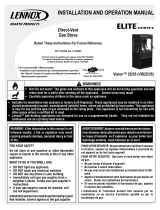 Lennox Hearth Gas Stove Manuel utilisateur
Lennox Hearth Gas Stove Manuel utilisateur
-
Kozyheat Slayton 42 Le manuel du propriétaire
-
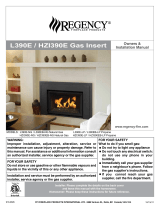 Regency Fireplace Products HZI390E-NG Le manuel du propriétaire
Regency Fireplace Products HZI390E-NG Le manuel du propriétaire
-
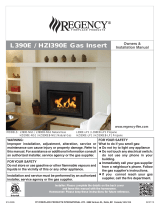 Regency Fireplace Products Horizon HZI390EB Le manuel du propriétaire
Regency Fireplace Products Horizon HZI390EB Le manuel du propriétaire
-
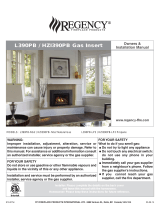 Regency Fireplace Products Horizon HZI390PB Le manuel du propriétaire
Regency Fireplace Products Horizon HZI390PB Le manuel du propriétaire
-
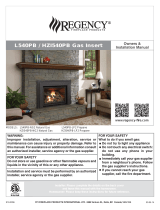 Regency Fireplace Products Liberty L540PB Le manuel du propriétaire
Regency Fireplace Products Liberty L540PB Le manuel du propriétaire
-
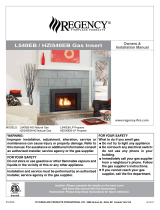 Regency Fireplace Products Horizon HZI540EB Le manuel du propriétaire
Regency Fireplace Products Horizon HZI540EB Le manuel du propriétaire
-
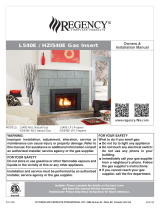 Regency Fireplace Products Horizon HZI540EB Le manuel du propriétaire
Regency Fireplace Products Horizon HZI540EB Le manuel du propriétaire
-
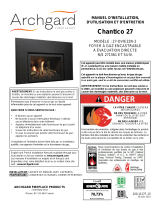 Archgard Chantico 27 Maintenance Manual
Archgard Chantico 27 Maintenance Manual
-
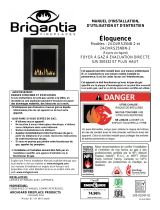 Archgard Brigantia Eloquence Manuel utilisateur
Archgard Brigantia Eloquence Manuel utilisateur




































































































